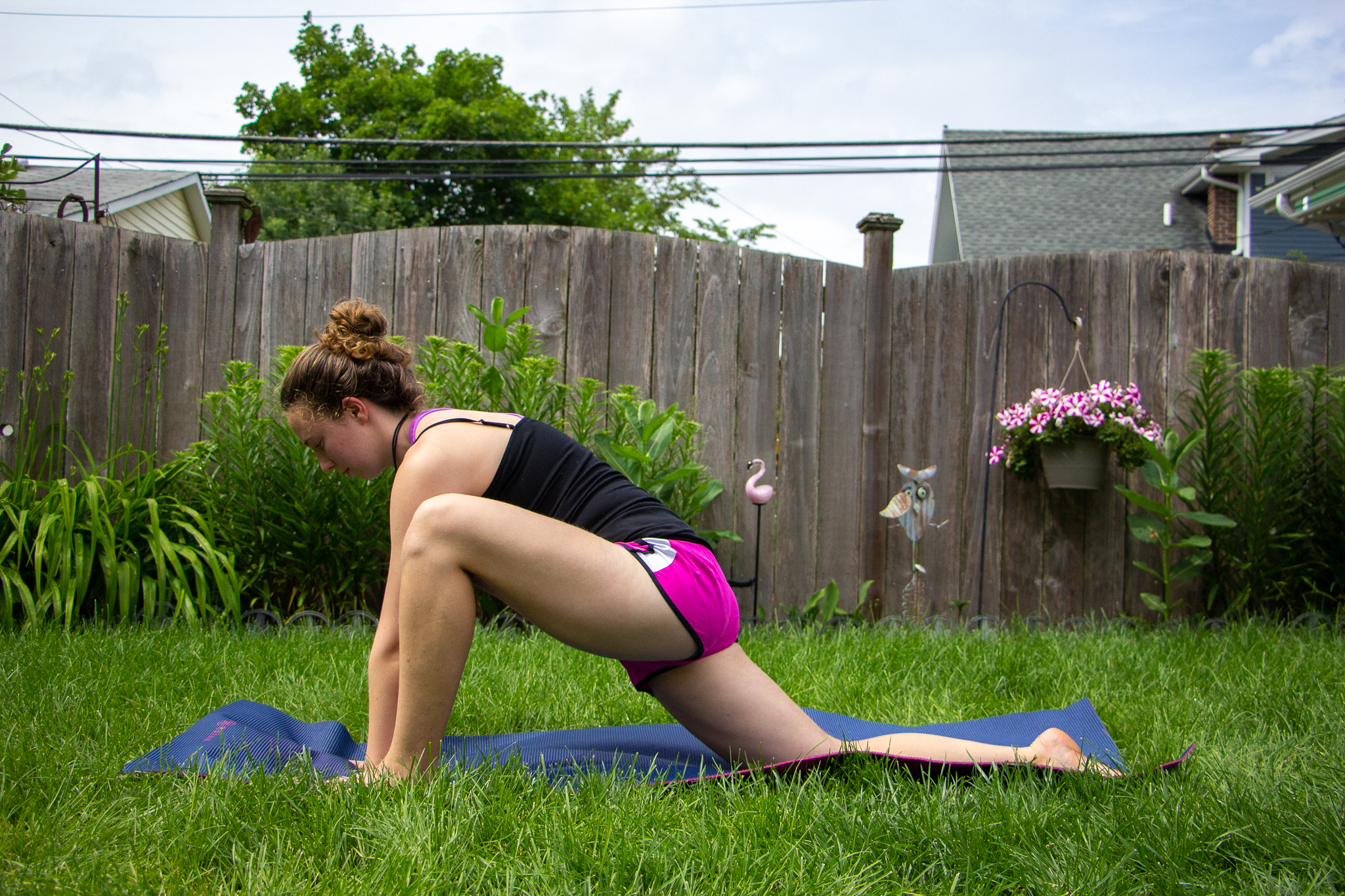A lunge is one of the most classic yet the most versatile exercise moves. Chances are you’re already adding lunges to your exercise routine, but if you’re not then you’re about to start with these lunge variations! Lunges are excellent movements because they are single-legged—which means that they challenge your balance and can help you even out muscular imbalances. A proper lunge targets the hips, glutes, quads, core, and hamstrings. I’m a big fan of compound movements (movements that work more than one muscle group) because they’re very efficient, and lunges take the cake for challenging your lower body and core.
There are probably 30+ variations of lunges you can do by combining lunging with other movements such as jumping, leg raises, twists, etc. but for this article I wanted to break down the most common variations of lunges so that you can add them to your workout routine with confidence. Feel free to add these into your next strength workout, your running routine, a balance-focused sessions, etc. Lunges are one movement I truly think that everyone should do. Here are my favorite variations!
Static lunge
Static lunging, or lunging in one spot, is one variation that I recommend everyone start with. To set up, move one foot forward and one foot back while maintaining your legs hips-width distance apart. Sink your weight straight down until both your knees are at a 90-degree angle with the front knee between the ankle and the toe (this is for the majority of the population—if you have really long limbs you may be able to safely allow the knee to go past the toe). You also want your knee to be tracking over the second toe, meaning that your knee should be in line with that toe rather than the big toe or pinky toe. If you find that your knee is inching toward the midline of the body, invite back out over that middle toe. There is no need for the back knee to touch the ground; it can hover a little bit above the ground at that 90-degree angle. Rise up. If you’re finding balance difficult, try lengthening the feet apart from each other to widen the base of support.
Static lunge hold
Set up the static lunge hold the same way you would set up a static lunge, and then hold in that 90-degree knee position for 20-30 seconds. The hold is an isometric contraction (meaning the muscle is contracting without moving) which is a way to maintain strength without placing stress on the joints.
Forward lunge
Once you’ve nailed the motion of a static lunge, you can begin to add a little more movement and balance! For a forward lunge you’ll start from a standing position and step your front foot out about two feet and then again sink your weight straight down like you’re doing a static lunge. There’s a temptation here to lunge forward rather than down because you’re already moving forward, but make sure that you step forward and then lunge straight down, as shifting forward during a lunge can place stress on the knee.
Reverse lunge
You can progress into a reverse lunge around the same time as a forward lunge; both variations add a balance challenge and also invite both the hamstrings and quads to stabilize as your step forward and back. For a reverse lunge you’ll step your foot back around two feet and again sink down into that 90-degree knee bend.
Curtsy lunge
A curtsy lunge is a more advanced variation that targets the outer thigh. You will begin in a standing position and lift one leg and send it backward in the direction of your standing leg. If you’re lunging with your left leg, say, then you will move the leg back and to the right, so that it lands just outside of and behind of the standing left leg. A curtsy lunge is aptly named; while it may seem confusing at first just remember that you are mimicking the movement of a curtsy. You will still have that 90 degree bend on your front knee, and you should be able to feel increased engagement in the outer thigh compared to other lunge variations.
Side lunge
A side lunge is an altogether different variation that hits the hip adductors, or muscles of the inner thigh. You’ll launch your foot 2-3 feet to the side and bend into the knee while feeling a stretch/contraction of the inner thigh of the straightened leg. Challenge yourself to keep your torso lifted as much as possible here, as it can be tempting to lean forward.
Forward lunge to reverse lunge
If you want to take your lunging game to the next level, the forward to reverse lunge is a stability game-changer. You’ll start in a stand and then place one foot forward, coming into a forward lunge. Then you’ll lift that same foot and immediately step it back into a reverse lunge. The standing leg that is not moving forward and back is asked to stabilize the body during the movement by the opposite leg, so this move is excellent for knee and ankle stability as well as balance. It’s definitely a great addition to a running routine!
Static lunge and twist
Twisting is a great variation you can add for a little extra core work and also to shift the glutes into place. As I mentioned above, one of the most common mistakes in a lunge is letting the knee drift too far toward the midline of the body – we want to always invite the knee out so it’s tracking with the middle toe. I have found that twisting toward the bent knee in a lunge helps shift that knee into place. Twisting also adds movement in the transverse plane and makes this move a little more functional! For the static lunge and twist, you want to move down into a static lunge following the instructions above and twist your torso toward the front knee. As you progress in this movement it can also be a good idea to hold a medicine ball for resistance.
Forward lunge and twist
Once you’ve gotten the hang of the static lunge and twist, you can start to add the extra element of stepping your leg forward and back. You’ll lunge forward following the instructions above, looking for that 90-degree bend in the knees, and once again twist toward the front knee. So much stability, core work, and balance!
I hope that you enjoy incorporating these lunge variations into your next workout! What’s your favorite type of lunge?
Also by Maille: These Pre- And Post-Workout Eats Help Meeting Your Fitness #Goals Waay Easier
5 Essential Foam Rolling Stretches For Myofascial Release
Get more like this—Sign up for our daily inspirational newsletter for exclusive content!
__
Video: Maille O’Donnell




